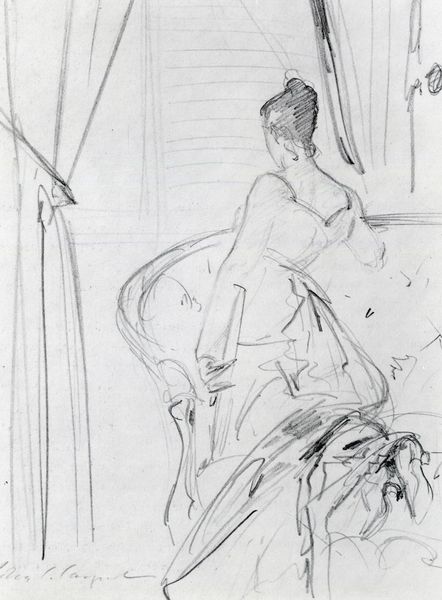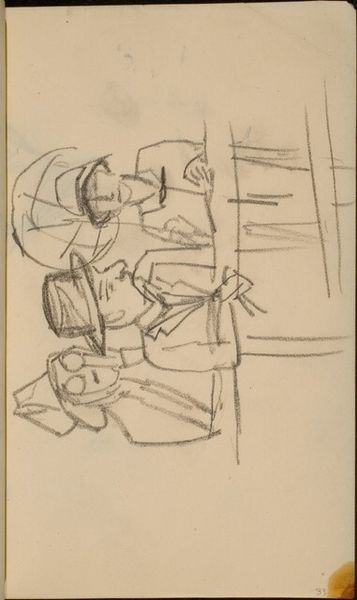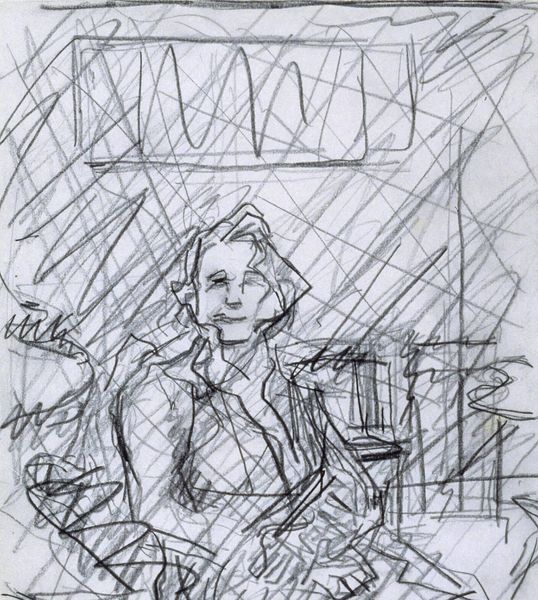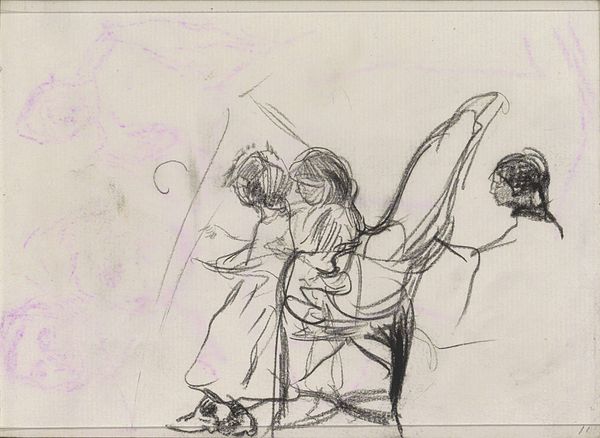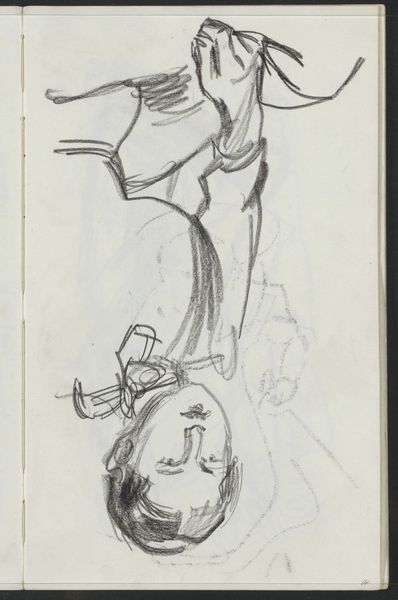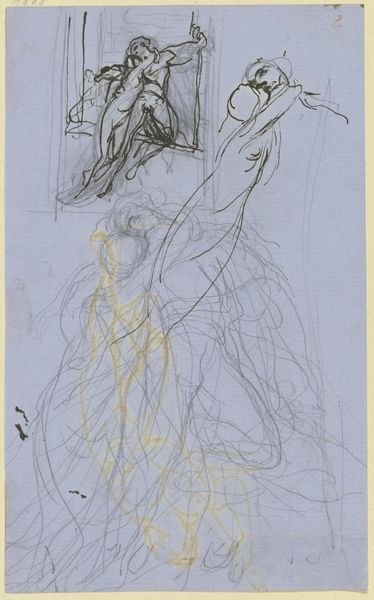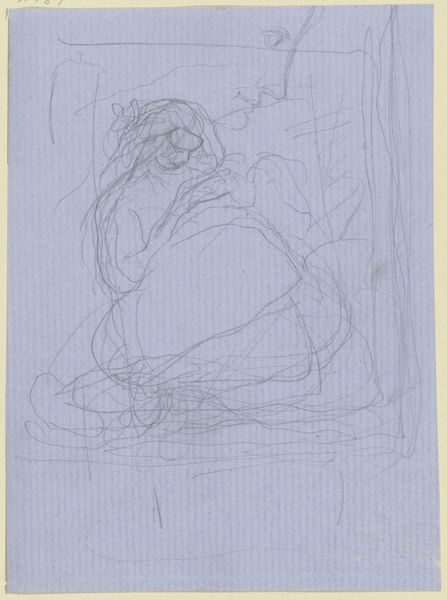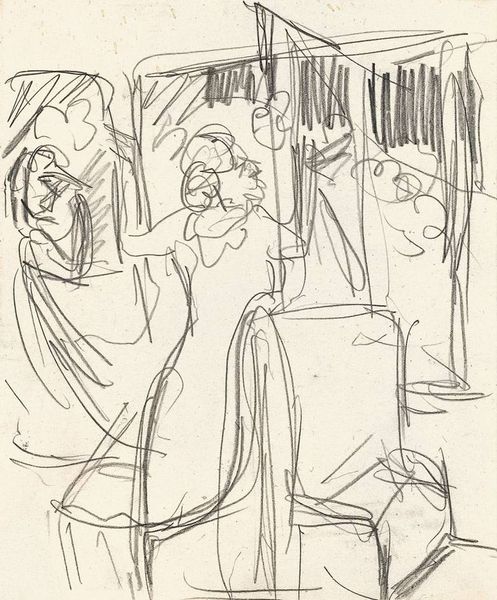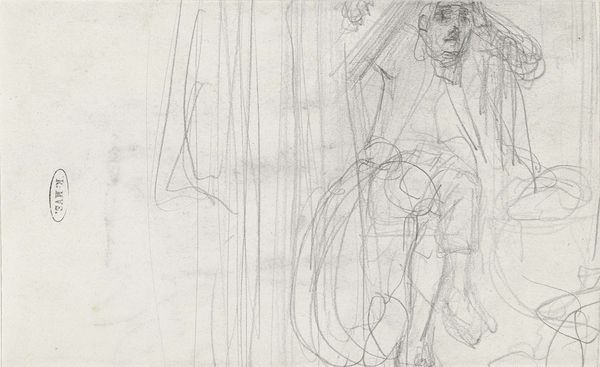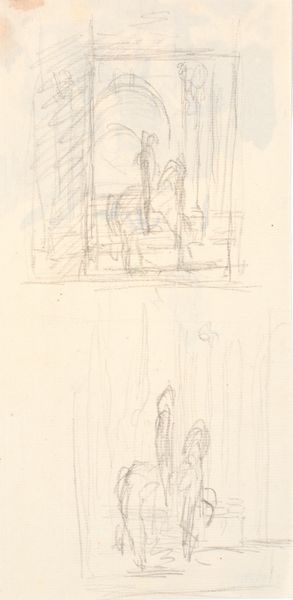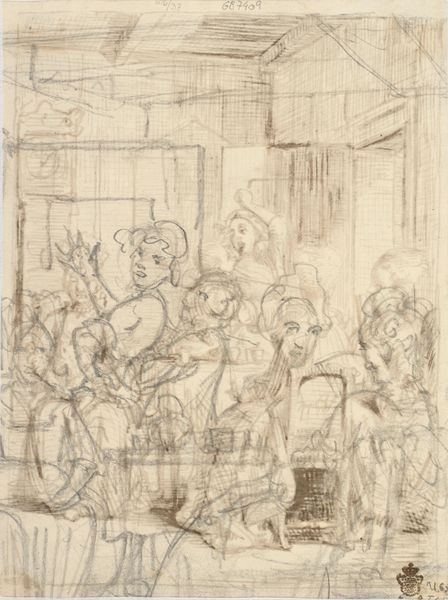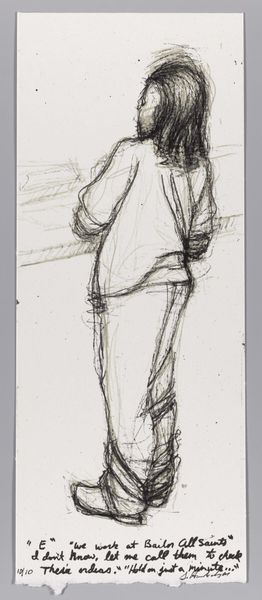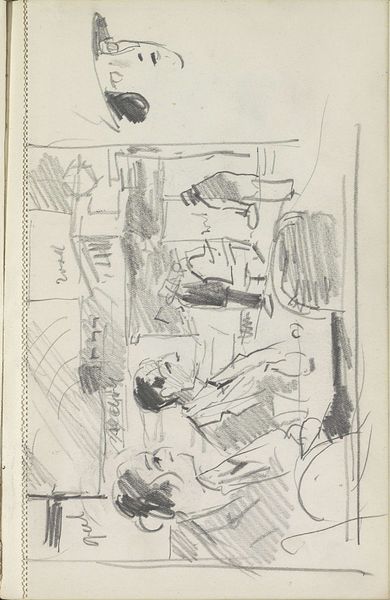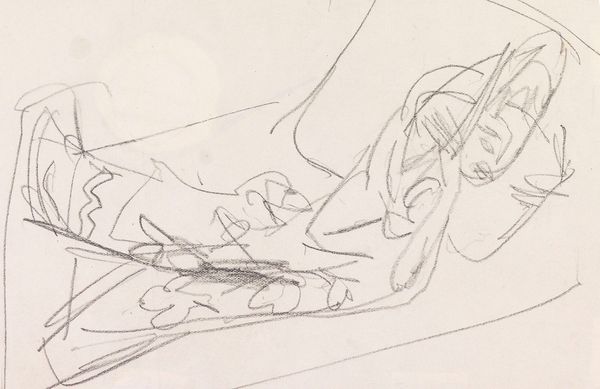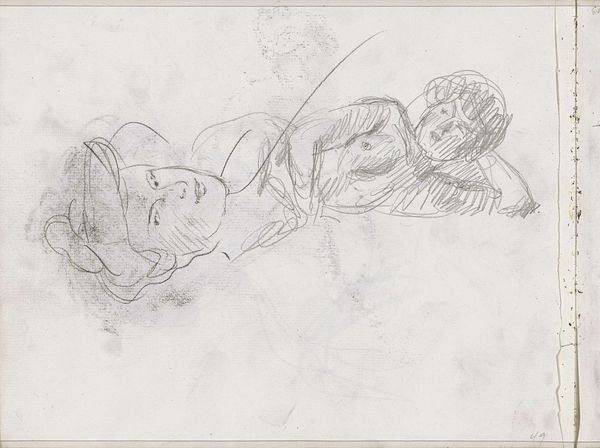
Dimensions: support: 420 x 297 mm
Copyright: © Paula Rego | CC-BY-NC-ND 4.0 DEED, Photo: Tate
Editor: This is Paula Rego's 'Study for ‘Lessons’ II' a pencil drawing, part of the Tate collection. The sketchy style gives it a dreamlike quality, almost like a memory. What strikes you most about this preliminary sketch? Curator: It sings to me of untold stories, those fleeting moments of transformation in a liminal space like a salon. Rego captures the waiting, the anticipation. Are they captive or being reborn? Editor: Reborn, maybe? I hadn’t thought of that. Curator: Notice the woman under the hairdryer, almost like a bizarre halo. It's darkly funny, isn’t it? A little absurd, a little menacing, a lot human. It’s about the performance of femininity, perhaps? Editor: That's such an interesting take, much deeper than my initial reaction. Curator: Art is about a journey, a conversation. What did you learn? Editor: To look beyond the surface, find the strange beauty within.
Comments
tate 8 months ago
⋮
http://www.tate.org.uk/art/artworks/rego-study-for-lessons-ii-t07932
Join the conversation
Join millions of artists and users on Artera today and experience the ultimate creative platform.
tate 8 months ago
⋮
This work is one of a series of preparatory drawings for Rego’s large scale pastel triptych The Betrothal: Lessons: The Shipwreck, after ‘Marriage a la Mode’ by Hogarth, 1999 (Tate T07919). Rego made the triptych for the exhibition Encounters: New Art from Old at the National Gallery, London in 2000. The exhibition curators invited contemporary artists to make new work in response to works in the National Gallery collection. Rego chose as her starting point the satirical narrative painting cycle Marriage A-la-Mode, c.1743 (National Gallery NG113-8) by William Hogarth (1697-1764). Hogarth’s series of six paintings, later reproduced as etchings, tell the story of an arranged marriage between the son of an impoverished aristocrat, the Earl of Squander, and the daughter of a social-climbing alderman. Paired off to satisfy the interests of their parents, the young couple is ill-matched from the start. Both lead dissolute, unhappy lives and die young: the syphilitic husband is murdered by his wife’s lover; she in turn poisons herself. Rego appropriated Hogarth’s subject, an arranged marriage, but transposed the setting to mid-twentieth-century Portugal.
